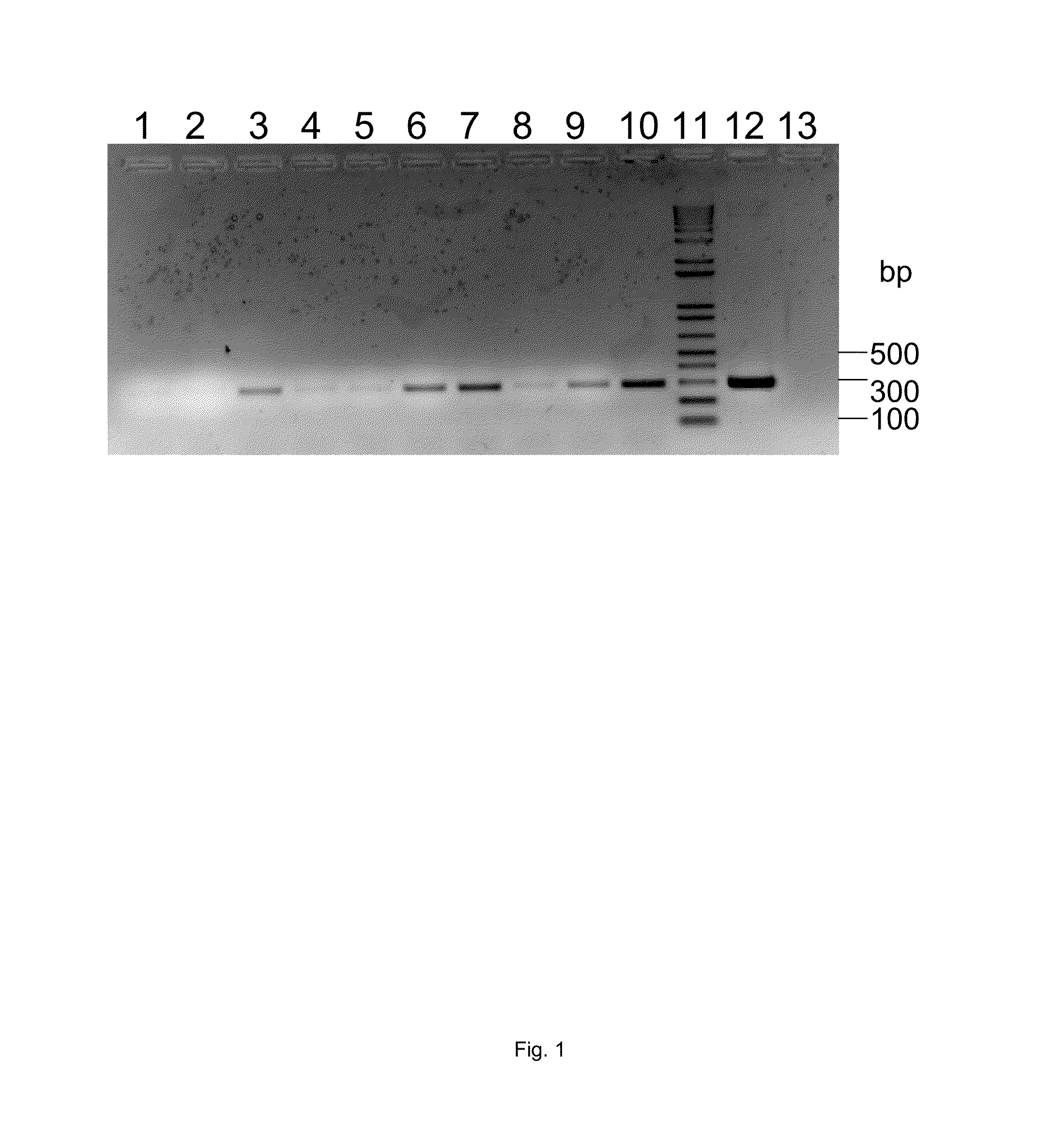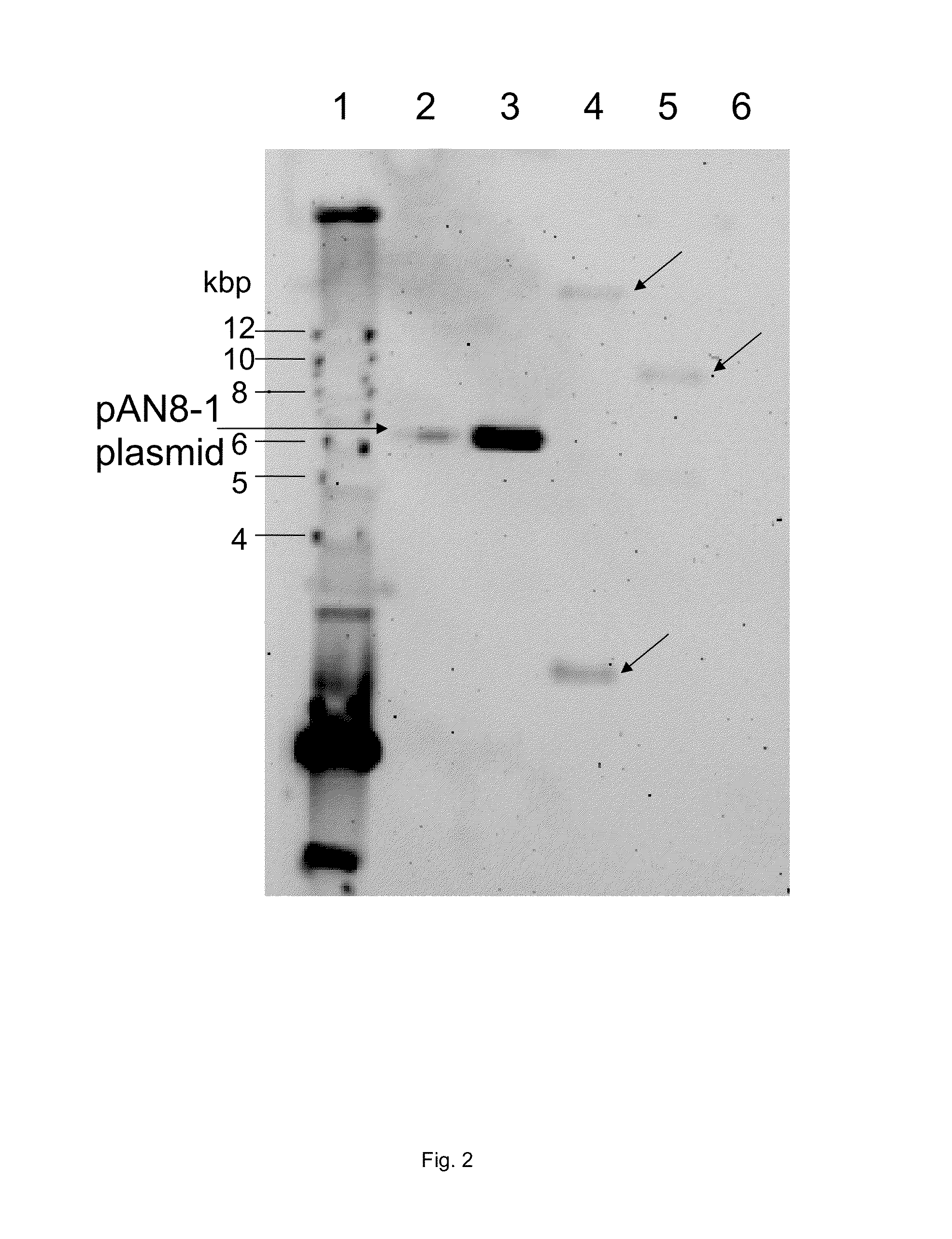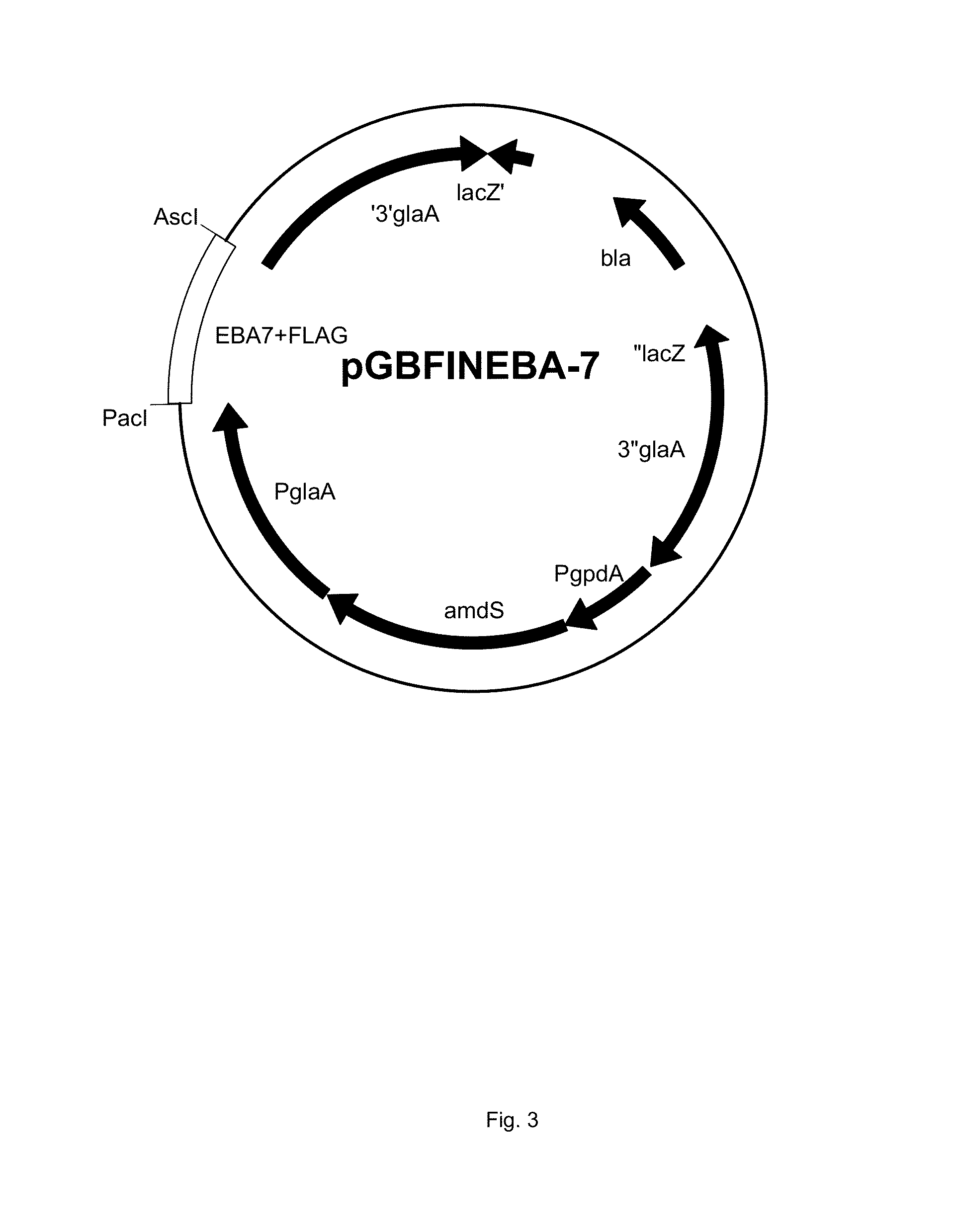Talaromyces transformants
a technology of transformants and talaromyces, which is applied in the field of talaromyces transformants, can solve the problems of limiting the commercialization of biomass bioconversion processes, the enormous energy potential of these carbohydrates, and achieves the effects of reducing the cost and hydrolysis efficiency of enzymes, and reducing the cost of the conversion process
- Summary
- Abstract
- Description
- Claims
- Application Information
AI Technical Summary
Benefits of technology
Problems solved by technology
Method used
Image
Examples
example 1
Transformation of Talaromyces Emersonii with Plasmids Containing Phleomycin Resistance Markers
[0319]This example describes a method to transform T. emersonii with pAN8-1 plasmid carrying a phleomycin resistance marker (Mattern, I. E., Punt, P. J., Van den Hondel, C. A. M. J. J., 1988. A vector of Aspergillus transformation conferring phleomycin resistance. Fungal Genet. Newsl. 35, 25).
Transformation of T. emersonii with pAN8-1
[0320]Spores were grown for 16 hours at 45° C. in a rotary shaker at 250 rpm in YGG medium (per liter: 8 g KCl, 16 g glucose.H2O, 20 ml of 10% yeast extract, 10 ml of 100× pen / strep, 6.66 g YNB+amino acids, 1.5 g citric acid, and 6 g K2HPO4). Mycelium was harvested by using Miracloth filter (Calbiochem, Nottingham, United Kingdom). For protoplast formation, per 2 g of mycelium 10 ml of STC buffer (per liter: 218 g Sorbitol (1.2 M), 7.35 g CaCl2.2H2O, 10 mM Tris / HCl pH7.5) and 1 ml of glucanex solution (250 mg / ml Glucanex 200G (Novozymes, Bagsvaerd, Denmark) in ...
example 2
Transformation of Talaromyces Emersonii with Plasmids Encoding Talaromyces emersonii Cellulases
[0332]This example describes the cloning and expression of FLAG-tagged T. emersonii beta-glucanase CEB protein in T. emersonii.
Cloning of T emersonii Expression Plasmid pGBFINEBA7 Encoding FLAG-Tagged T. emersonii Beta-Glucanase CEB Protein
[0333]The gene encoding T. emersonii beta-glucanase CEB protein and a C-terminal FLAG-tag was synthesised by DNA2.0 (Menlo Park, USA) and cloned as PacI / AscI fragment into pGBFIN-5, which plasmid is described in WO 9932617. The pGBFIN5 expression vector comprises the glucoamylase promoter, cloning site, terminator region, an amdS marker operably linked to the gpd promoter, and 3′ and 3″ glaA flanks. The amino acid and nucleotide sequences of the FLAG-tagged T. emersonii beta-glucanase CEB protein is represented by SEQ ID NO: 3 and SEQ ID NO: 4, respectively. FIG. 3 represents a map of pGBFINEBA7 containing the T. emersonii beta-glucanase CEB protein und...
example 3
Cellulase Activity Measurement of Supernatants Isolated from Talaromyces emersonii Transformed with pGBFINEBA7
[0344]This example describes the measurement of endoglucanase activity in supernatants of T. emersonii transformed with pGBFINEBA7 (see EXAMPLE 2 for description of transformant). Activity was measured by using carboxymethyl cellulose as substrate and detecting reducing sugars by using dinitrosalisylic acid reagent.
[0345]T. emersonii transformants containing pGBFINEBA7 (see EXAMPLE 2) were used to inoculate 100 ml of Talaromyces medium 1 and incubated at 45° C. at 250 rpm in an incubator shaker for 3 days. Supernatants were harvested and used to measure endoglucanase activity. The results of the tests in the endoglucanase activity assay are shown in Table 1.
[0346]
TABLE 1Results of endoglucanse activity measurement in supernatantsof an empty strain and a T. emersonii transformantStrainEndoglucanse activity (WBCU / ml)pGBFINEBA7 1#6321Empty strain
[0347]T. emersonii transformants...
PUM
| Property | Measurement | Unit |
|---|---|---|
| temperature | aaaaa | aaaaa |
| temperature | aaaaa | aaaaa |
| temperature | aaaaa | aaaaa |
Abstract
Description
Claims
Application Information
 Login to View More
Login to View More - R&D
- Intellectual Property
- Life Sciences
- Materials
- Tech Scout
- Unparalleled Data Quality
- Higher Quality Content
- 60% Fewer Hallucinations
Browse by: Latest US Patents, China's latest patents, Technical Efficacy Thesaurus, Application Domain, Technology Topic, Popular Technical Reports.
© 2025 PatSnap. All rights reserved.Legal|Privacy policy|Modern Slavery Act Transparency Statement|Sitemap|About US| Contact US: help@patsnap.com



